Resources Search Results
Nitrate Trends in Wisconsin Public Water Systems
Public water systems are required to submit yearly nitrate samples to the Wisconsin DNR. The Center for Watershed Science and Education’s interactive dashboard assists in analyzing and viewing historical data for public water systems in Wisconsin to better understand Nitrate trends locally and statewide.
Organizational Capacity for Lake Groups
Whether you are part of a lake association, lake district, or watershed group, you have a chance to contribute your time and skills to make an organization more effective. Extension Lakes is working to make your path up the “capacity ladder” as easy as possible by sharing freely available tools, ideas, and resources for capacity development.
Outdoor Hazards in Wisconsin: A Guide to Insects, Plants, and Wildlife
In Wisconsin, the risk of encountering harmful animals and plants while spending time outdoors is low, but it’s still good to learn how to recognize, avoid, and handle potential problems caused by insects, plants, and wildlife.
People of the Lakes
For over 40 years, UW-Extension has published a guide book that has served as a fundamental tool for people creating a lake organization. The guide is designed for those who would like to play a positive role in the fate of their lakes. It discusses the two major types of lake organizations operating in Wisconsin: […]
PFAS in Wisconsin
Explore this Natural Resources Institute story map to learn more about PFAS in the state of Wisconsin.
Rabbit Ecology and Damage Management
Rabbits mean different things to different people. For hunters, the cottontail rabbit is an abundant, sporting and tasty game animal. But vegetable and flower gardeners, farmers and homeowners have very little to say in favor of the creatures.
Raccoon Ecology and Damage Management
Raccoons provide ecological and recreational benefits, but they can also cause problems for homeowners and agricultural producers.
Rivers2Lake Educational Curriculum
The Rivers2Lake program at the Lake Superior National Estuarine Research Reserve provides professional learning, mentoring, and support in outdoor and environmental education. This site helps you get involved with the program or draw from curriculum resources across a broad age range and subject areas.
Sandhill Crane Ecology and Damage Management
Today, the sandhill crane population is healthy, benefiting from habitat restoration projects and protection from hunting throughout Wisconsin. However, cranes sometimes cause crop damage to planted corn and wheat and property damage to homeowners.
Score Your Shore
Statewide partners including Extension Lakes developed the Shoreland Evaluation Tool to help lakeshore owners better understand and participate in habitat restoration and runoff and erosion control projects. The evaluation tool walks you through questions about the physical aspects of your lake or river property, as well as how you manage it.
Shoreland Property Best Practices
Extension Lakes and partners with Healthy Lakes & Rivers overviews five simple and inexpensive best practices on your property that improve habitat and water quality. A best practice is a proven method to produce desired results. The Healthy Lakes & Rivers team surveyed citizen, business, and agency partners to identify the top 5 best practices […]
Skunk Ecology and Damage Wildlife
Wisconsin is home to two native skunk species, the striped skunk and the spotted skunk. While they sometimes cause problems, skunks can benefit landowners, farmers and gardeners alike because they eat common pests like field mice, moles, and insects and serve as prey for other animals.
Soil Health Demonstration and Assessment Videos
The Soil Health Nexus, a multi-state team of extension educators including UW-Madison Extension, created a series of videos highlighting how to conduct various soil health assessments featuring experts and Extension professionals. Curious how to do a soil core test or a slump test? These videos can help.
Soil Health Matrix Decision Tool
The Soil Health Matrix Decision Tool was created by the Soil Health Nexus including UW-Madison Extension staff to help producers weigh different considerations such as time, skill, labor, and equipment needs when considering adding or changing agronomic practices. Explore how these considerations change and how different soil health indicators are likely to be impacted when […]
Exploring Streams: Stream Monitoring Curriculum Guide
Streams are dynamic places to study! Middle and high school students will learn about at least six aspects of stream health when teachers guide them through this Water Action Volunteers stream monitoring curriculum. The following activity guide is divided into six sections. You can download the entire curriculum or specific components of it.




